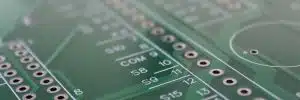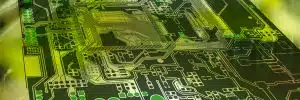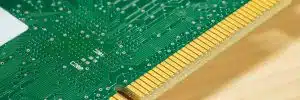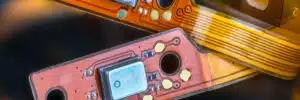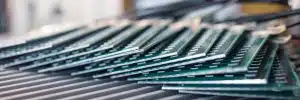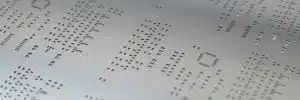JHY PCB Blog Hub
Your Source for Expert PCB Design, Manufacturing, and Assembly Insights – Stay Informed with 2025 Trends!
Understanding the Importance of Solar Cable in Renewable Energy Systems
In the rapidly evolving landscape of renewable energy systems, the role of Solar Cable cannot be overstated. As solar power continues to gain traction as a sustainable energy source, the efficiency and reliability of the components that enable its function become paramount. Solar Cables are specifically designed to withstand the demanding conditions of solar installations, ensuring optimal energy transfer from photovoltaic panels to inverters and ultimately to the grid or storage systems. Understanding the importance of these cables not only enhances the overall performance of solar energy systems but also ensures safety and longevity in operation.
In this article, we will delve into essential tips regarding the selection, installation, and maintenance of Solar Cables, ensuring that both new and existing solar projects operate at their best, harnessing the full potential of renewable energy.
The Role of Solar Cables in Efficient Energy Transmission
Solar cables play a critical role in the efficient transmission of energy in renewable energy systems, particularly solar photovoltaic (PV) setups. In 2020, the International Energy Agency (IEA) reported that solar energy contributed to over 10% of global electricity generation, and this figure is expected to rise significantly as countries aim for net-zero emissions. Understanding how solar cables function as the conduits of this energy is essential for optimizing performance and ensuring the longevity of solar installations.
Since solar panels generate direct current (DC), which needs to be converted to alternating current (AC) for use in homes and businesses, the selection of appropriate solar cables is paramount. High-quality cables are designed to minimize power loss through heat, accommodating the thermal conditions associated with solar installations. According to a report by Bloomberg New Energy Finance, poor cabling can lead to energy losses of up to 5%, which impacts the overall efficiency and economic viability of solar projects. Thus, investing in reliable, well-insulated solar cables helps maintain the integrity of energy transmission and reduces costs over time, facilitating the broader adoption of solar technology.
Types of Solar Cables Used in Renewable Energy Systems
Solar cables play a crucial role in the functionality and efficiency of renewable energy systems, particularly in solar applications. These cables are essential for transmitting the electricity generated by photovoltaic (PV) panels to inverters and from inverters to the grid or storage systems. The demand for high-quality solar cables is increasing as the renewable energy sector expands, with advancements in technology leading to the development of cables that can withstand various environmental conditions while ensuring minimal energy loss.
There are several types of solar cables used in renewable energy systems, each specifically designed for different applications. The most common types include photovoltaic (PV) cables, which are used for connecting solar panels within a solar array; and solar AC cables, which are utilized for the connection from the inverter to the grid. Additionally, specialized solar cables with features like UV resistance, water protection, and high-temperature tolerance are gaining momentum, particularly as countries aim for ambitious renewable energy targets. As India pushes toward achieving 500 GW of non-fossil fuel energy capacity by 2030, the role of these cables becomes even more pivotal in solidifying the framework for a sustainable energy future.
Understanding the Importance of Solar Cable in Renewable Energy Systems
| Type of Solar Cable | Description | Voltage Rating | Applications | Temperature Range |
|---|---|---|---|---|
| Solar Pv Cable | Used for connecting solar panels. | Up to 1,000 V DC | Solar farms, rooftops | -40°C to 90°C |
| Solar Inverter Cable | Connects solar panels to inverters. | Up to 1,500 V DC | Commercial solar installations | -40°C to 90°C |
| Flexible Solar Cable | Highly flexible for easier installation. | Up to 1,000 V DC | Residential setups, mobile applications | -40°C to 90°C |
| DC Solar Cable | Used specifically for DC applications. | Up to 1,000 V DC | Solar arrays, off-grid systems | -40°C to 90°C |
Key Features and Specifications of High-Quality Solar Cables
When discussing renewable energy systems, the significance of solar cables cannot be overstated. High-quality solar cables are essential for ensuring optimal efficiency and safety in solar power installations. According to industry studies, proper selection of materials can reduce energy losses by as much as 10%. Key features to consider include cable type, temperature rating, insulation, and voltage.
Solar cables often fall into two main categories: single-core and multi-core. For instance, single-core cables typically offer better performance for longer distances, while multi-core cables can be more flexible and easier to install in tight spaces. The insulation should be rated for UV resistance and high temperatures to withstand various environmental conditions, with a standard temperature rating often exceeding 90°C. Furthermore, cables should comply with international standards, such as IEC 60228, ensuring they can handle the specific electrical loads safely.
Tips: Always check for the cable's certification and specifications from reputable sources. Investing in cables with higher copper content can improve conductivity and minimize overheating. Additionally, consider using cables with fire-retardant properties to enhance safety in your installation.
Installation and Maintenance Best Practices for Solar Cables
When it comes to solar energy systems, the importance of proper installation and maintenance of solar cables cannot be overstated. According to a report by the NATIONAL RENEWABLE ENERGY LABORATORY (NREL), the efficiency of a photovoltaic system can be significantly impacted by the quality and condition of the wiring, with performance losses of up to 20% attributable to poor connections and damaged cables. Ensuring that solar cables are installed correctly minimizes the risk of energy loss and prolongs the overall lifespan of the system.
Best practices for solar cable installation involve ensuring that cables are appropriately rated for the environment in which they will be used. For instance, using UV-resistant cables in outdoor installations is crucial to prevent degradation from sunlight exposure. Additionally, maintaining proper spacing and avoiding sharp bends or kinks will further enhance the longevity of the cables. Regular maintenance checks, as recommended by the INTERNATIONAL ELECTROTECHNICAL COMMISSION (IEC), should be conducted at least once a year to identify and address any potential issues such as insulation wear or loose connections, which can lead to system failures or safety hazards. Keeping these best practices in mind not only optimizes performance but also enhances the reliability of renewable energy systems.
Future Trends in Solar Cable Technology and Its Impact on Renewable Energy
The future of solar cable technology is increasingly tied to advancements in automation and artificial intelligence, which are enhancing predictive capabilities and asset management in renewable energy systems. As the global energy landscape shifts towards sustainability, the integration of smart technologies into solar cables is crucial. For instance, the solar energy capacity in the United States is projected to expand exponentially, highlighting a pivot toward solar as a primary power source. Data from recent market analyses reveal that the global low-voltage cable market, crucial for solar installations, is expected to grow from $9.39 billion in 2018 to $23.57 billion by 2032, driven by a compound annual growth rate of 6.91%.
Moreover, the burgeoning energy storage market in China, anticipated to exceed $223.3 billion by 2024, underscores the potential for solar cable advancements to support comprehensive energy solutions. The increasing emphasis on interoperability among different energy sources—solar, hydrogen, and storage—points to a future where integrated systems are the norm. As San Juan embarks on a path towards self-sufficiency with solar installations on its prominent streets, such initiatives serve as a model for urban centers globally, demonstrating the vital role of enhanced solar cabling technology in achieving smart, renewable energy goals.

